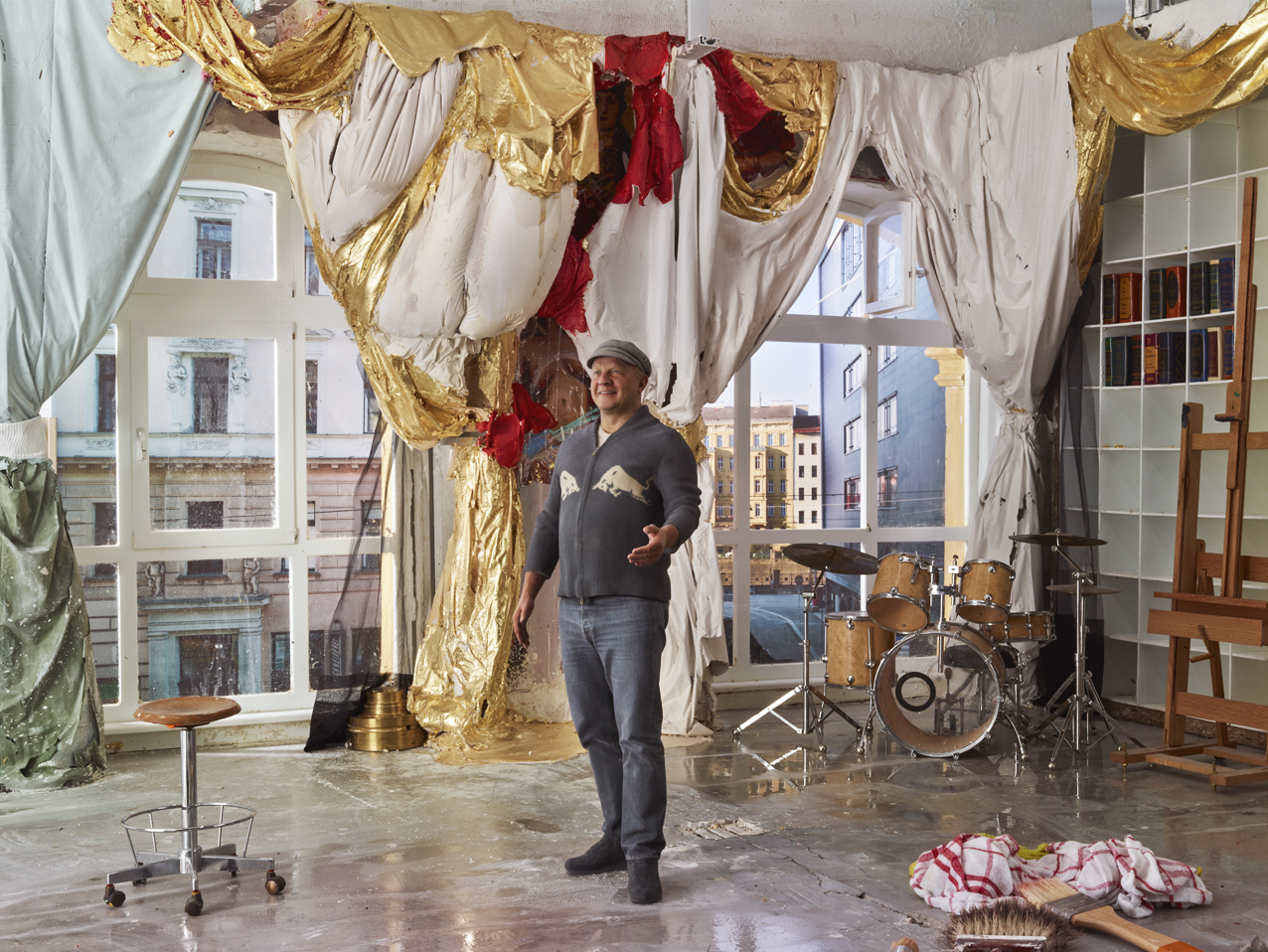Making Truth

Die Wahrheit ist mir nicht so wichtig, ich möchte nur ein gutes Bild!
Die Könige in Madrid wollen ihre Prinzessinnen mit den Prinzen aus Wien verheiraten. Dazu senden die Spanier ein Bild von der Infantin nach Wien. Dabei geht es um alles, die Kaufkraft des Prinzen bringt 500 Billionen Euro nach Madrid. Wir können uns lebhaft vorstellen, wie gut der Künstler ausgewählt wurde, bevor er das Mädchen porträtierte. Der König steht hinter dem Maler und mahnt unnachgiebig Korrekturen ein, wenn es um die Schönheit geht. Irgendwann sterben die Habsburger aus, und alle fragen sich, warum…
Als die Bilder durchschaut waren, und somit als Dokument der „Wirklichkeit“ nicht mehr funktionierten, wurde der Bildende Künstler gegen einen Bild-Apparat ausgetauscht , dem im Gegensatz zum gemalten Bild ein höheres Maß an Konkretheit zuerkannt wurde. Diese technische Neuerung empfindet nichts und reagiert auch nicht, wenn der König schreit.
Die Wiener wissen fortan, welch eine Schwiegertochter kommt – geheiratet wird immer weniger.
Die Demokratie übernimmt das Land, und mit ihr kommt die Fotografie – schnell, mannigfach, ehrlich! Die Bildende Kunst profitiert zunächst davon, ordnet sich das Foto unter. Erst der Film wird die narrative Kunst vernichten.
Ausgerechnet ein amerikanischer Fernseh-Produzent (Allen Funt, Erfinder der Versteckten Kamera, „Candid Camera”) kaufte und sammelte in den 1960er Jahren die zu jener Zeit völlig unbekannten Monumentalbilder von Sir Lawrence Alma-Tadema, für einen Apfel und ein Ei. Nach dem Verkauf der Sammlung im Jahr 1973 über Sotheby‘s um eine Vielfaches, war Alma-Tadema wieder zurück, vor allem in Hollywood. Bühnenbildner, Ausstatter und Filmemacher nutzen seine Gemälde bis heute als Blaupause und Quellenmaterial für Filme wie Ben Hur (1959), Gladiator (2000) oder Exodus (2014).1
Die Bildende Kunst macht sich unabhängig von Religion und Kapital und erfindet die Moderne.
Ich komme erst später auf die Welt, für mich stellt sich die Frage: Gibt es (ein?) Leben nach Gerhard Richter?
Bis zur Reife von Digitalität musste ich in einem Modell-Atelier leben und arbeiten. Heute ist es wieder leicht, ein Bild zu machen, weil die Malmittel dazu da sind!
Die Malerei zeigt uns das Gefühl und Fotografie zeigt uns die Wahrheit. Ich stelle das Bild vor die Kamera, und somit das Gefühl vor die Wahrheit.
Lois Renner
P.S.
Mit meinem Bild „Heliogabalus“ möchte ich eine Brücke bauen, von jenem Zeitpunkt im 19. Jahrhundert, zu dem die Malerei, verdrängt durch den Film, aufhören musste, eine Geschichte als Wahrheit zu verbreiten, hin zu der Gegenwart, in der das wieder möglich ist.
Truth, however, does not matter to me, I just want a good picture!
A picture tells the truth, anyway!
The Spanish kings in Madrid want to marry their Princesses off to the Austrian Princes of Vienna. The Spaniards send to the court in Vienna one or two portraits of the Infanta. This is about everything, the purchasing power of the prince brings 500 trillion Euros to Madrid. We can vividly imagine how well the artist was selected before portraying the girl. The king stands behind the painter and urges relentless corrections, when it comes to beauty. At some point the House of Habsburg will become extinct, and everyone will wonder why …
When the picture was seen through and figured out, and thus no longer functioned as a document of „reality,“ the visual artist was exchanged for a picture apparatus, which, in contrast to the painted picture, was given a higher degree of concreteness and reality. This technical innovation feels nothing and has no reaction when the king cries.
From then on, the Viennese know which daughter-in-law is coming—marriage has become rare…
Democracy takes over the country, and with it comes the photography— fast, manifold, honest! The visual arts initially benefit from this, the higher medium of painting subordinating the photo. Only the film („motion picture“) will destroy the two-dimensional narrative art.
Ironically, it was the American television celebrity Allen Funt (inventor of the Hidden Camera, „Candid Camera“), who bought nearly thirty of Alma-Tadema paintings in the 1960s—imagery of a by-gone era—for an apple and an egg. After re-selling the collection in the 1970s many times over, Sir Lawrence Alma-Tadema, as other figures of Victorian art, was back again, especially in Hollywood. Stage designers and filmmakers used and use his paintings till now as a blueprint and source material for films such as Ben Hur (1959), Gladiator (2000) or Exodus (2014).
Visual art made itself independent of religion and capital and invented the modern age.
I will be born later, for me one question arises: Is there (any) life after Gerhard Richter?
To the maturity of digitality, I had to live and work in a model studio. Today it is easy again to make a picture, because the media, the instruments are all here!
Painting shows us the feeling, and photography shows us the truth. I put the picture in front of the camera—feeling in front ofthe object-world of truth.
Lois Renner
P.S.With my picture „Heliogabalus“ I want to build a bridge, from that point of time in the 19th century when narrative painting, displaced by the film, had to stop spreading a story as truth, to the present, in which this is possible again.
















